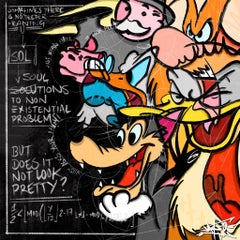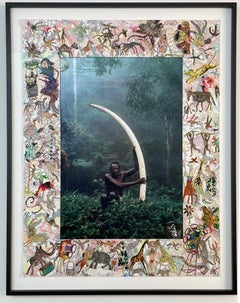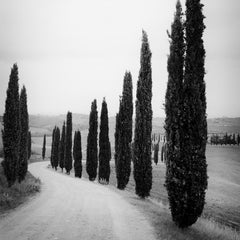Immagis Fine Art Photography Drawings and Watercolor Paintings
to
2
Overall Width
to
Overall Height
to
2
1
1
2
2
2
1
1
2
2
2
1
1
1
2
Existential Problems!, Painting, Pop Art, Street Art
By Jay-C
Located in München, BY
Edition 5
JAY-C – the pseudonym of this innovative young artist known for his subversive use of familiar figures and symbols. Using a distinct and fine British sense of humour,
he addresses stereotypes of modern society and his work, both playful and profound, stimulates us to question conventional social conceptions. JAY-C is a barometer responding to the world around us.
Having had his first solo exhibition in 2018, in the same year he did a collaboration with BoConcept on their iconic Imola chair...
Category
2010s Pop Art Portrait Drawings and Watercolors
Materials
Mixed Media, Pigment, Archival Pigment
Giraffe's Eye, Kenya, Elephant, Painting, Photography, Mixed Media
By Joachim Schmeisser
Located in München, BY
Unique Piece / One of a Kind
An eye of a Giraffe. Museum Archival Print on Hahnemühle Laid paper, Photography painted with Drawing Ink, Gold Pigments. The...
Category
2010s Contemporary Animal Drawings and Watercolors
Materials
Ink, Mixed Media, Archival Pigment
Related Items
Elui with World Record Cow Elephant Tusk, 47 lbs., Marsabit Forest, Kenya – Art
By Peter Beard
Located in Zurich, CH
PETER BEARD (1938–2020, USA)
Elui with World Record Cow Elephant Tusk, 47 lbs., Marsabit Forest, Kenya, 1962/2006
Color print with gelatin silver print collage, watercolor, tempera paint, ink
Sheet 141 x 108,6 cm (55 1/2 x 42 3/4 in.)
Unique
Signed recto and verso in ink
Peter Beard (1938–2020) was an American artist who lived and worked in New York and Kenya. In Africa Peter Beard found the central theme of his life, the destruction of the natural animal world by man and civilization. His photographs of Africa, African animals and the journals that often integrate his photographs have been widely shown and published since the 1960s.
Inspired by earlier trips to Africa in both 1955 and 1960, Beard traveled to Kenya upon graduation. Working at Tsavo National Park, he photographed and documented the demise of 35,000 elephants and other wildlife, later to become the subject of his iconic book, “The End of the Game...
Category
1960s Contemporary Color Photography
Materials
Ink, Watercolor, Gouache, Color, Silver Gelatin
Cypress Trees, along the Road, Tuscany, black and white photography, landscape
By Gerald Berghammer
Located in Vienna, Vienna
Black and white fine art landscape photography print. Path through a cypress avenue to the castle, Tuscany, Italy. Archival pigment ink print, edition of 9. Signed, titled, dated and...
Category
2010s Contemporary Black and White Photography
Materials
Archival Ink, Archival Paper, Archival Pigment
H 15.75 in W 15.75 in D 0.08 in
Neoclassical composition of a sculptor kneeling before his statue of the Madonna
Located in Middletown, NY
An allegory of loyalty, with the subject's dog pictured seated, holding his master's chisel in his mouth; fidelity personified.
Italian School, 18th century
Ink wash in gray and bl...
Category
Mid-18th Century Italian School Figurative Paintings
Materials
Laid Paper, Ink, Watercolor
Manhattan Bridge, Brooklyn, New York City, black and white photography, limited
By Gerald Berghammer
Located in Vienna, Vienna
Black and White Fine Art cityscape photography. Archival pigment ink print, edition of 9. Signed, titled, dated and numbered by artist. Certificate of authenticity included. Printed ...
Category
2010s Contemporary Black and White Photography
Materials
Archival Ink, Archival Paper, Archival Pigment
H 15.75 in W 15.75 in D 0.08 in
Rare Modernist Hungarian Rabbi Pastel Drawing Gouache Painting Judaica Art Deco
By Hugó Scheiber
Located in Surfside, FL
Rabbi in the synagogue at prayer wearing tallit and tefillin.
Hugó Scheiber (born 29 September 1873 in Budapest – died there 7 March 1950) was a Hungarian modernist painter.
Hugo Scheiber was brought from Budapest to Vienna at the age of eight where his father worked as a sign painter for the Prater Theater. At fifteen, he returned with his family to Budapest and began working during the day to help support them and attending painting classes at the School of Design in the evening, where Henrik Papp was one of his teachers. He completed his studies in 1900. His work was at first in a post-Impressionistic style but from 1910 onward showed his increasing interest in German Expressionism and Futurism. This made it of little interest to the conservative Hungarian art establishment.
However, in 1915 he met the great Italian avant-gardist Filippo Tommaso Marinetti and the two painters became close friends. Marinetti invited him to join the Futurist Movement. The uniquely modernist style that he developed was, however, closer to German Expressionism than to Futurism and eventually drifted toward an international art deco manner similar to Erté's. In 1919, he and his friend Béla Kádar held an exhibition at the Hevesy Salon in Vienna. It was a great success and at last caused the Budapest Art Museum to acquire some of Scheiber's drawings. Encouraged, Scheiber came back to live in Vienna in 1920.
A turning point in Scheiber's career came a year later, when Herwarth Walden, founder of Germany's leading avant-garde periodical, Der Sturm, and of the Sturm Gallery in Berlin, became interested in Scheiber's work. Scheiber moved to Berlin in 1922, and his paintings soon appeared regularly in Walden's magazine and elsewhere. Exhibitions of his work followed in London, Rome, La Paz, and New York.
Scheiber's move to Germany coincided with a significant exodus of Hungarian artists to Berlin, including Laszlo Moholy-Nagy and Sandor Bortnyik. There had been a major split in ideology among the Hungarian avant-garde. The Constructivist and leader of the Hungarian avantgarde, Lajos Kassák (painted by Hugó Scheiber in 1930) believed that art should relate to all the needs of contemporary humankind. Thus he refused to compromise the purity of his style to reflect the demands of either the ruling class or socialists and communists. The other camp believed that an artist should be a figurehead for social and political change.
The fall out and factions that resulted from this politicisation resulted in most of the Hungarian avant gardists leaving Vienna for Berlin. Hungarian émigrés made up one of the largest minority groups in the German capital and the influx of their painters had a significant effect on Hungarian and international art. Another turning point of Scheiber's career came in 1926, with the New York exhibition of the Société Anonyme, organized by Katherine Dreier. Scheiber and other important avant garde artists from more than twenty-three countries were represented. In 1933, Scheiber was invited by Marinetti to participate in the great meeting of the Futurists held in Rome in late April 1933, Mostra Nazionale d’Arte Futurista where he was received with great enthusiasm. Gradually, the Hungarian artists began to return home, particularly with the rise of Nazism in Germany. Kádar went back from Berlin in about 1932 and Scheiber followed in 1934.
He was then at the peak of his powers and had a special flair in depicting café and cabaret life in vivid colors, sturdily abstracted forms and spontaneous brush strokes. Scheiber depicted cosmopolitan modern life using stylized shapes and expressive colors. His preferred subjects were cabaret and street scenes, jazz musicians, flappers, and a series of self-portraits (usually with a cigar). his principal media being gouache and oil. He was a member of the prestigious New Society of Artists (KUT—Képzőművészek Új Társasága)and seems to have weathered Hungary's post–World War II transition to state-communism without difficulty. He continued to be well regarded, eventually even receiving the posthumous honor of having one of his images used for a Russian Soviet postage stamp (see image above). Hugó Scheiber died in Budapest in 1950.
Paintings by Hugó Scheiber form part of permanent museum collections in Budapest (Hungarian National Museum), Pecs (Jannus Pannonius Museum), Vienna, New York, Bern and elsewhere. His work has also been shown in many important exhibitions, including:
"The Nell Walden Collection," Kunsthaus Zürich (1945)
"Collection of the Société Anonyme," Yale University Art Gallery, New Haven, Connecticut (1950)
"Hugó Scheiber: A Commemorative Exhibition," Hungarian National Museum, Budapest (1964)
"Ungarische Avantgarde," Galleria del Levante, Munich (1971)
"Paris-Berlin 1900-1930," Centre Georges Pompidou, Paris (1978)
"L’Art en Hongrie, 1905-1920," Musée d’Art et l’Industrie, Saint-Etienne (1980)
"Ungarische Avantgarde in der Weimarer Republik," Marburg (1986)
"Modernizmus," Eresz & Maklary Gallery, Budapest (2006)
"Hugó Scheiber & Béla Kádár," Galerie le Minotaure, Paris and Tel Aviv (2007)
Hugó Scheiber's paintings continue to be regularly sold at Sotheby's, Christie's, Gillen's Arts (London), Papillon Gallery (Los Angeles) and other auction houses.
He was included in the exhibition The Art Of Modern Hungary 1931 and other exhibitions along with Vilmos Novak Aba, Count Julius Batthyany, Pal Bor, Bela Buky, Denes Csanky, Istvan Csok, Bela Czobel, Peter Di Gabor, Bela Ivanyi Grunwald, Baron Ferenc Hatvany, Lipot Herman, Odon Marffy, C. Pal Molnar...
Category
Early 20th Century Modern Figurative Paintings
Materials
Paper, Charcoal, Pastel, Watercolor, Gouache
Early 20th Century Young Golfer Figurative
By Margaret Neilson
Located in Soquel, CA
Study of a young man with his golf clubs by listed artist Margaret Neilson Armstrong (American, 1867-1944). Image, 14"H x 20"W. Displayed in vintage mat. S...
Category
1920s Realist Portrait Drawings and Watercolors
Materials
Paper, Pencil
Mick Jagger and Keith Richards Candid with Newspaper
Located in Austin, TX
This candid capture features a young Mick Jagger and Keith Richards of The Rolling Stones, sitting with a newspaper circa 1967.
The Rolling Stones were at the forefront of the Briti...
Category
1960s Contemporary Black and White Photography
Materials
Archival Ink, Archival Paper, Archival Pigment
The Beatles in a Cockpit
Located in Austin, TX
The Beatles (John Lennon, George Harrison, Ringo Starr, and Paul McCartney) in the cockpit of their Liverpool bound plane.
The Beatles were an English rock band formed in Liverpool ...
Category
1960s Contemporary Black and White Photography
Materials
Archival Ink, Archival Paper, Archival Pigment
Gloriette, Schloss Schoenbrunn, Vienna, black and white photograph, limited
By Gerald Berghammer
Located in Vienna, Vienna
Black and white fine art cityscape - landscape photography print. The Gloriette is a Viennese landmark in the park of Schönbrunn Palace, Vienna, Austria. Archival pigment ink print, ...
Category
2010s Contemporary Black and White Photography
Materials
Archival Ink, Archival Paper, Archival Pigment
H 23.63 in W 23.63 in D 0.08 in
Fragments II, Male Nude, Rome, Italy, Europe, Photography of Antiquities
By Roberta Fineberg
Located in New york, NY
Fragments II, Rome, Italy 2019 by Roberta Fineberg was shot at Ostia Antica, the Old Port of Rome and present-day archeological site in Italy. The image captures a symmetrical albei...
Category
2010s Contemporary Black and White Photography
Materials
Archival Ink, Archival Paper, Rag Paper, Digital, Archival Pigment, Digi...
Study of a Seated Figure from Behind Pencil Sketch
Located in Cirencester, Gloucestershire
Study of a Seated Figure
pencil drawing on artist paper
painting: 11 x 8.25 inches
double sided
provenance: private collection, England
condition: very good and sound condition
Category
20th Century Impressionist Portrait Drawings and Watercolors
Materials
Pencil
Steve McQueen at the Time of "The Reivers"
Located in Austin, TX
Steve McQueen at the time of "The Reivers", pictured smiling and looking left, hand in mouth.
Steve McQueen was an American actor. His antihero persona, emphasized during the height...
Category
1960s Contemporary Black and White Photography
Materials
Archival Ink, Archival Paper, Archival Pigment


